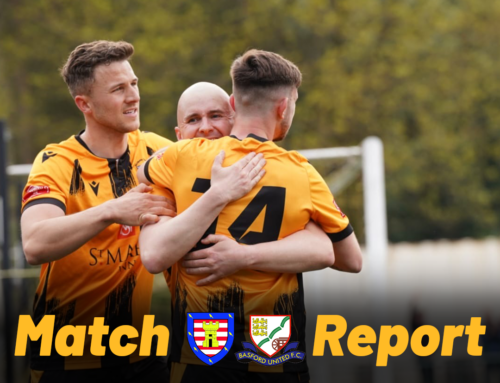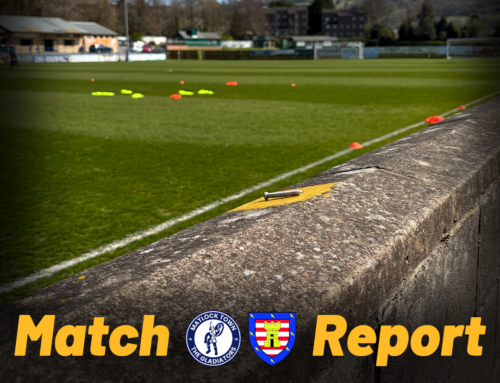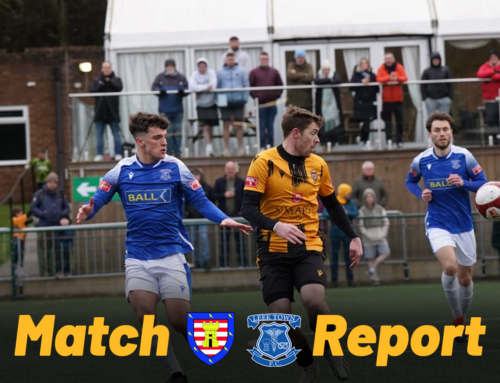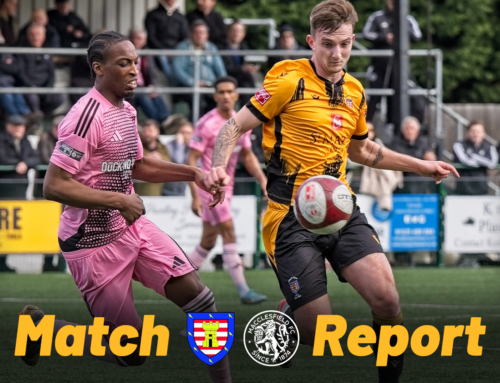
Date: Saturday 3rd October
Venue: Merseyrail Community Stadium, Haig Avenue, Southport, PR8 6JZ
Kick Off: 3pm
Competition: Emirates FA Cup
Highlights: Highwaymen TV
The Highwaymen look to advance in the FA Cup as they make a second trip to the North West in a week as they face Southport from the National League North.
History
It was on Thursday, 12 November 1881 that Southport played its first association football match. Although association football was played in the town’s private schools in the late 1870s the original Southport Football Club began as a rugby team. Southport Football Club arranged rugby fixtures for 1881–82. After some heavy defeats, the last recorded being on 15 October 1881, the club switched to association football. On 12 November, six of that team lined up when Southport played Bootle Second XI in their first match under Association Rules.
Ralph Rylance did more than anyone to establish association football in the town. He came to Southport from Blackburn having played for the Blackburn Law team, a noted eleven in those days. Performances soon improved with him playing, and Tranmere Rovers were beaten twice whilst the Tradesman of Southport and Liverpool Excelsior were both overcome 7–0.
On 7 October 1882, Southport entertained Liverpool Ramblers in their first ever F.A., or English Challenge Cup tie as the competition was called for years. The game was watched by 300 spectators and resulted in a 1–1 draw.
In the 1884–85 season the club merged with the Southport Athletic Society and the team moved to the Sports Ground, Sussex Road. As football grew in popularity other clubs sprang up in the town. Southport Wanderers, High Park, Churchtown and Southport Old Boys were amongst the most prominent however Southport Football Club was considered to be the town’s premier side.
At the Southport Wanderers AGM in June 1886, at which a representative of Southport Football Club was present, they invited Southport to amalgamate following the severance of their connection with the Athletic Society, whose unfortunate connection with the Football Club had resulted in the Society incurring an expenditure on their account of £88–3 shillings. After 5 years existence Southport’s first football club folded.
At least six former Southport players and many of their supporters transferred their affiliations to Southport Wanderers. Southport Wanderers moved to a new ground in Scarisbrick New Road for the 1886–87 season. On 28 September 1886, at a General Meeting held in the Mather’s Saleroom, it was unanimously resolved that in future the club be called Southport Football Club.
In the summer of 1888, the year the Football League was founded, with the game increasing in popularity, It was felt that a team of stronger calibre should be formed to represent the district. The idea met with favour and the initial meeting called to form such a club took place on 12 June at Scarlett’s Rooms, Chapel Street.
At a second meeting, held at the Railway Hotel a week later, Mr. McGowan successfully proposed that the name of the club should be Southport Central Association Football Club.
At the start of the 1905–06 season Central moved to its present home, Haig Avenue, which was then known as Ash Lane. In 1911, the club became founder members of the Central League. In 1918, the club was renamed as Southport Vulcan – having been bought by the Vulcan Motor Company – becoming the first club to take a sponsor’s name.
In 1921 the club, now named simply Southport, joined the Football League and became a founder member of the Third Division North. In 1931, Southport became the first club from the Third Division North to reach the sixth round (quarter-finals) of the FA Cup, where they lost 9–1 to Everton. A year later the club recorded its record attendance, when 20,010 watched them play Newcastle United in the fourth round of the FA Cup.
Having finished in the bottom half of the table at the end of the 1957–58 season, the club dropped into the Fourth Division following the reorganisation of the Third Division North and Third Division South into Third and Fourth Divisions. The club’s first promotion came at the end of the 1966–67 season, when they finished as runners-up in the Fourth Division behind Stockport County under the guidance of Billy Bingham, who later went on to manage the Northern Irish national team. They were relegated back to the Fourth Division in 1970 but won promotion again in 1973 when they finished as Fourth Division Champions. Relegation back to the Fourth Division followed the very next season. This heralded a period of decline as crowds dropped – on some occasions into just three figures – and the ground fell into disrepair.
Disaster struck in 1978, when the club was voted out of the Football League following three consecutive 23rd (out of 24) placed finishes, and was replaced by Wigan Athletic. The voting couldn’t have been tighter, as the clubs drew on the first ballot (when many had expected Rochdale to be voted out), but Wigan’s superior canvassing ensured that they won the second ballot. Southport was the last club to leave the Football League through the re-election process. Automatic relegation from the Fourth Division was introduced in 1986–87.
After several seasons with South Liverpool, Brian Kettle was appointed manager and was instrumental in one of the most successful periods. Kettle had a difficult task from the off, his first season in charge saw him start with only three players Andy Johnston, Stuart Bimson and club captain Rob Sturgeon. After a poor start to the season which saw the club in the relegation places until mid-October after bringing in several new players such as Ossie Smith, Bob Howard, Steve Whitehall, Steve Holden, Peter Wright, Alan McDonald, the returning Ian Baines and for the third time Tony Quinn they finished the season in a very respectable seventh place in the Northern Premier League, albeit 38 points off the champions Colne Dynamoes who were not accepted for promotion and ultimately folded.
For the 1990–91 season, very little changed and was a very exciting season for the club. The free-scoring prowess of Holden and Whitehall saw the club reach 100 league goals in March and four semi-final appearances, losing only one. Ultimately due to the cup runs, the league performance suffered and they only managed to finish 5th in the league.[4] However, there was now renewed optimism in the town.
The 1991–92 season started dreadfully for the club due to the loss of key personnel in the summer. Holden and Whitehall both left within weeks, the latter going for a club record £25,000 to Rochdale. Kettle had to rebuild once again, but it didn’t go to plan straightaway. The club were bottom of the table till September, only managing to win their first game at the start of October. After a series of good runs, they managed to claw their way up the table to once again finish seventh.
The 1992–93 season was one of the most important seasons in the clubs recent history. Southport impressively won the league with 96 points and once again scoring 100 goals and tasted success in two more cup competitions and an excellent FA Cup run took them through to the second round proper for the first time since 1968.[3]
In 1998 the club had its first (and only) trip to Wembley, when they lost 1–0 to Cheltenham Town in the final of the FA Trophy. 10,000 Southport fans made the trip to London to see the match.
Last Match
Southport are yet to play a competitive game this season but have had 13 games in pre-season and have won 10 of them and scored 45 goals in the process.
Morpeth came from two goals down to draw 2-2 at Lancaster on Tuesday evening. Liam Henderson and Carl Finnigan grabbed the goals for Town to take a point.







